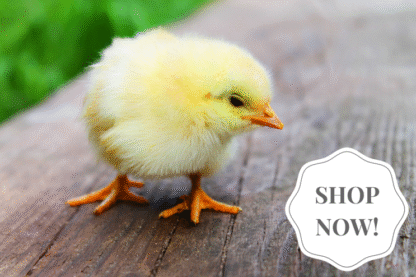
Chickens are endlessly entertaining. Many flock owners consider chicken watching to be therapeutic after a hectic day. But chicken bullying can spoil the fun for both you and your chickens. Here’s how to identify and prevent chicken bullying.
What is chicken bullying?
Chicken bullying occurs when one or a few chickens pick on, peck at, chase, or outright fight with other flock members. Bullying causes stress among the chickens, which can lead to fewer eggs. It can also result in injury, especially to the more timid flock members.
Bullying is not the same as establishing the pecking order, which involves jostling to find a place in the flock’s social hierarchy. It is also not the same as flock-wide aggression, which is essentially general grumpiness resulting from outside stressors that affect the entire flock. And it’s not the same as a flock picking on one injured, weak, or sick individual.
Chickens will occasionally fight, just like people. A chicken bully, on the other hand, always has it out for any flock member that gets in its way.
How to identify the bully
Identify a chicken bully by watching the flock while the chickens are eating, drinking, or foraging. Generally all flock members will actively engage in whatever the flock is doing, rather than peck or chase others. If your schedule doesn’t allow time to observe the flock’s activities, you might opt to use cameras to monitor your chickens.
Sometimes the first sign of chicken bullying is seeing the more timid members of the flock spend a lot of time hiding. Or they might remain on a perch in the coop while others are engaging in normal daily chicken activities. Missing feathers can also be a clue, although chickens lose feathers for many other reasons.
What causes chicken bullying?
No one is exactly sure what causes a chicken to become a bully. Genetics can certainly be a factor, as some breeds are naturally more aggressive than other breeds.
Major triggers for bullying are overcrowding and inadequate access to feed and water. The bullying chicken then lays claim to personal space and to a prime position at the feeder and drinker, chasing others away.
If your chickens don’t each have at least 4 square feet of coop space and 8 square feet of run space, your facility is inadequate for the size of your flock. Options include increasing space available for the flock, or decreasing the size of the flock.
Provide enough feeders and drinkers so at least one-third of your birds can access them at the same time. Additional feeders and drinkers serve to reduce competition. Space them well apart to ensure that all the chickens can gain access without fighting or being chased away.
A varied environment also discourages bullying. Perches at multiple heights inside and outside the coop, and shrubs or small shelters in the run give timid flock members places to lie low. Providing dust bathing opportunities gives chickens something to do. And soothing music helps calm frayed avian nerves.
How to prevent a chicken from bullying
If, despite your best efforts, you still have a persistent bully, you can take steps to prevent the chicken from bullying.
1. Time-out: Sometimes a time-out can persuade a chicken bully to correct the errors of its ways. Separate the offender for a few days, where the bird can still see the rest of the flock. Meanwhile, the chickens will reshuffle their pecking order. When bully returns to the flock, it will likely be less dominant than it was on removal. Reintroduce the bully during periods of typically low aggression, such as after the flock has been fed. If the bullying resumes, try additional time-outs.
2. Pinless peepers: A device that fits over the bully’s beak like a pair of sunglasses, pinless peepers let the chicken see to both sides, but prevent the bird from seeing (and pecking) what’s in front. Pinless peepers may look odd, but they are an inexpensive solution with immediate effect.
3. Rehome: A solution of next-to-last resort is to rehome the chicken bully. Out of fairness, inform the new owner ahead of time why the chicken needs rehoming. The new owner can then decide if the bird would fit in with the existing flock and its environment.
4. Stew Pot: As a solution of last resort, eliminating the chicken altogether is a sure-fire method to prevent bullying.
Helpful Links
8 Things to Know Before Building a Chicken Coop
How to Mix Different Chicken Breeds in One Flock
How to Deal with a Mean Rooster
And that’s today’s news from the Cackle Coop.
Gail Damerow has written numerous books about keeping poultry, many of them available from the Cackle Bookstore.

